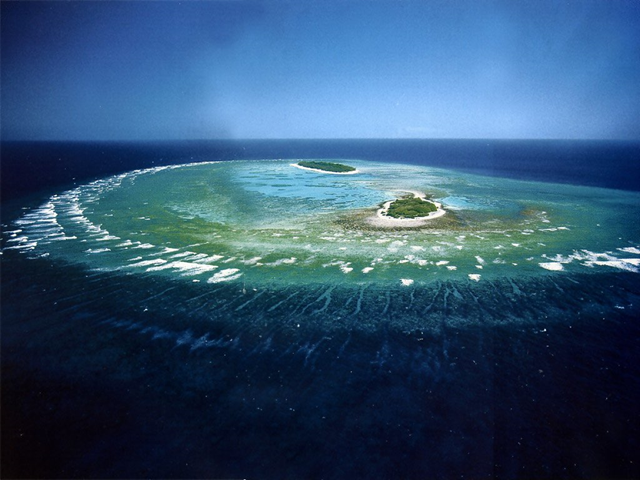Cyclone Yasi adds to Great Barrier Reef’s flood woes – Ocean heating and acidification ‘will knock out the reef in the long term anyway’
Sydney (AFP) Feb 6, 2011 – Hammered by a monster cyclone just weeks after flooding spewed toxic waste into its pristine waters, Australia’s Great Barrier Reef could face a slow recovery due to climate change, experts warn. Severe Tropical Cyclone Yasi, a top-category storm, ripped through Australia’s northeast tourist coast Thursday, levelling houses and decimating crops as it hit land near the city of Cairns, gateway to the Reef. Though it is too early to assess the extent of the damage, marine experts said the sprawling coral structure was bound to have been harmed by Yasi’s blistering 290 kilometre (180 mile) per hour winds. “Cyclones do damage reefs,” Nick Graham, a senior research fellow at James Cook University, told AFP. “They tend to be be particularly damaging in shallow waters, so they can break corals and kill areas of live coral, so you get a reduction of coral cover. … And that then can have a knock-on effect,” Graham said. The world’s largest living organism, which stretches for 345,000 square kilometres (133,000 square miles) off Australia’s northeast coast, was already suffering after last month’s record flooding washed a mucky cocktail of debris, sediment, pesticides and other run-off out to sea. Storms such as Yasi have the power to reduce reefs to rubble and wreak severe damage on living corals. Smashed fragments have already begun washing up on Australian beaches, according to the Great Barrier Reef Marine Park Authority, who estimate that recovery could take 10 years. … Cyclones are a fact of life on the reef — there were 55 between 1969 and 1997 according to a recent study — but warming and acidification of the ocean linked to climate change have both increased their frequency and left corals more vulnerable. “What normally would have recovered in the past in many other places in the world takes a long time because the reefs are not optimal; they don’t have a lot of resilience,” said Professor Ove Hoegh-Guldenburg, Director of Queensland University’s Global Change Institute. “The second thing that is happening is that as we heat the oceans through global warming, we are increasing the frequency of mega cyclones like Yasi. … which potentially, given (the) circumstances, can have really big impacts on coral reefs, reducing their ability to bounce back.” Coral growth has slowed markedly on the reef since 1990 and parts of it have suffered severe bleaching due to rising sea temperatures and acidity that kill its plant-like organisms, leaving just the white limestone skeleton. Overall, both this and cyclone damage are symptoms of worsening and dangerous climate change, said John Merson, from the University of New South Wales. “I think probably more damage is being done (to the reef) by the rising temperature in the ocean which is causing the cyclone, as well as the reef to be damaged,” said Merson. “The other question is the complete lack of attention being given to the fact that we have a category five cyclone because we have climate change, yet we completely ignore this factor in the whole thing. “The same thing — the heating of the water — is going to increase coral bleaching which will knock out the reef in the long term anyway.”
